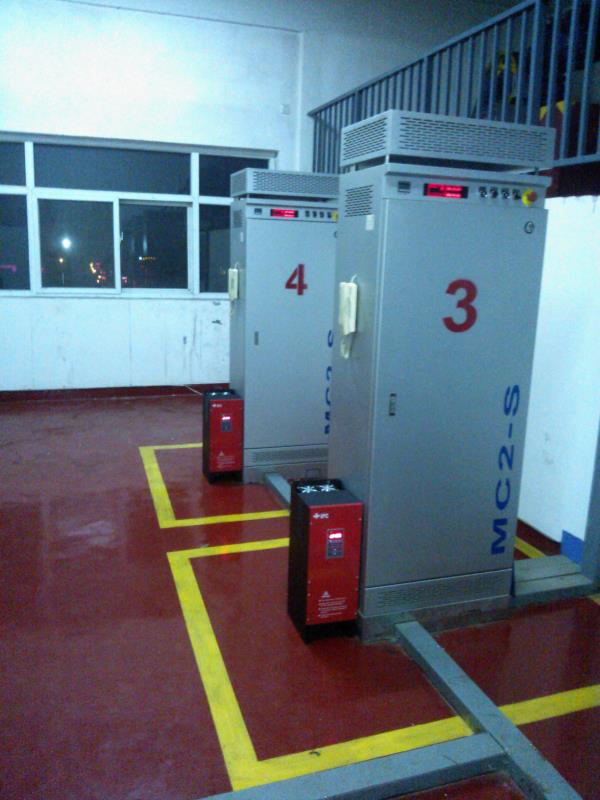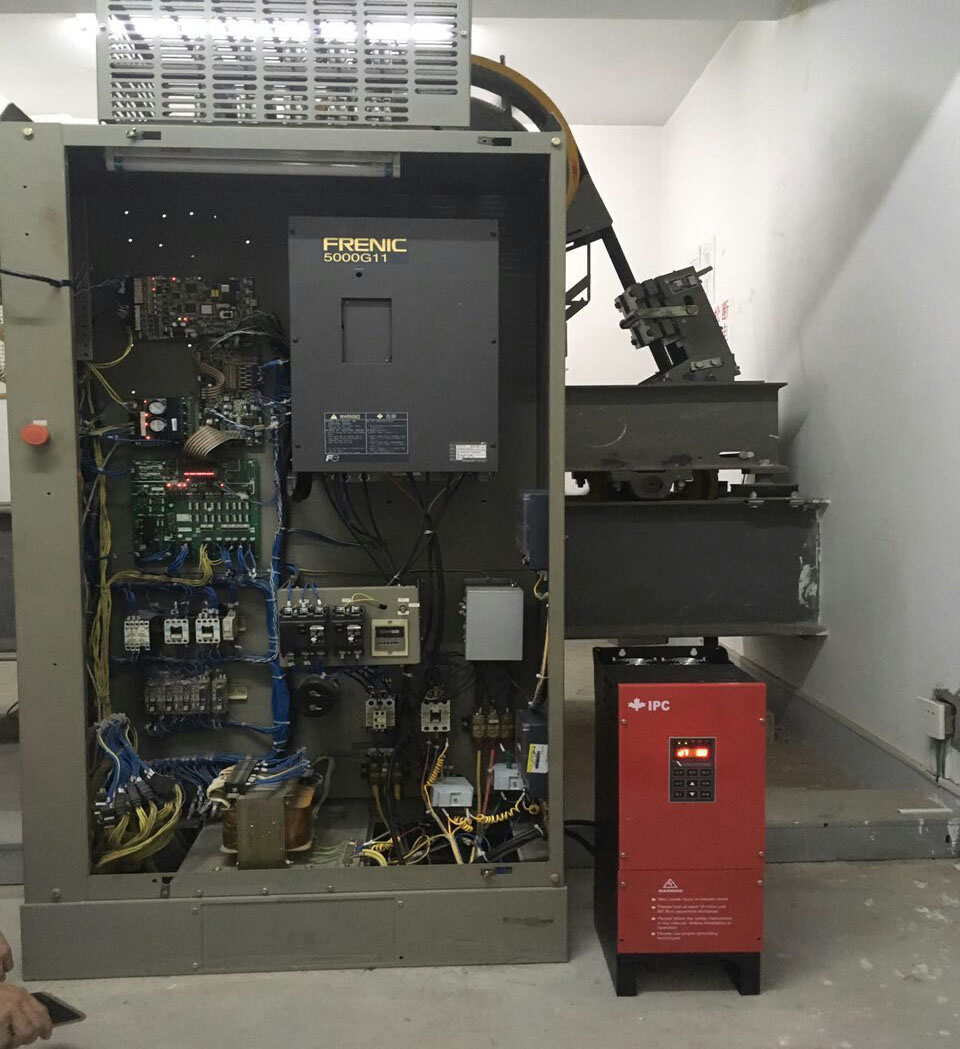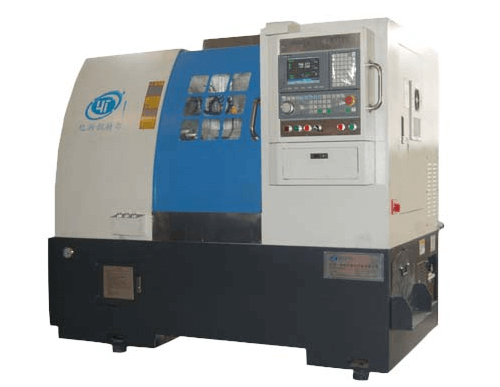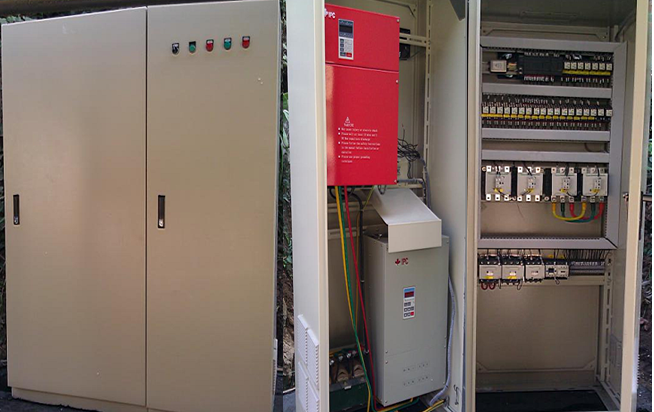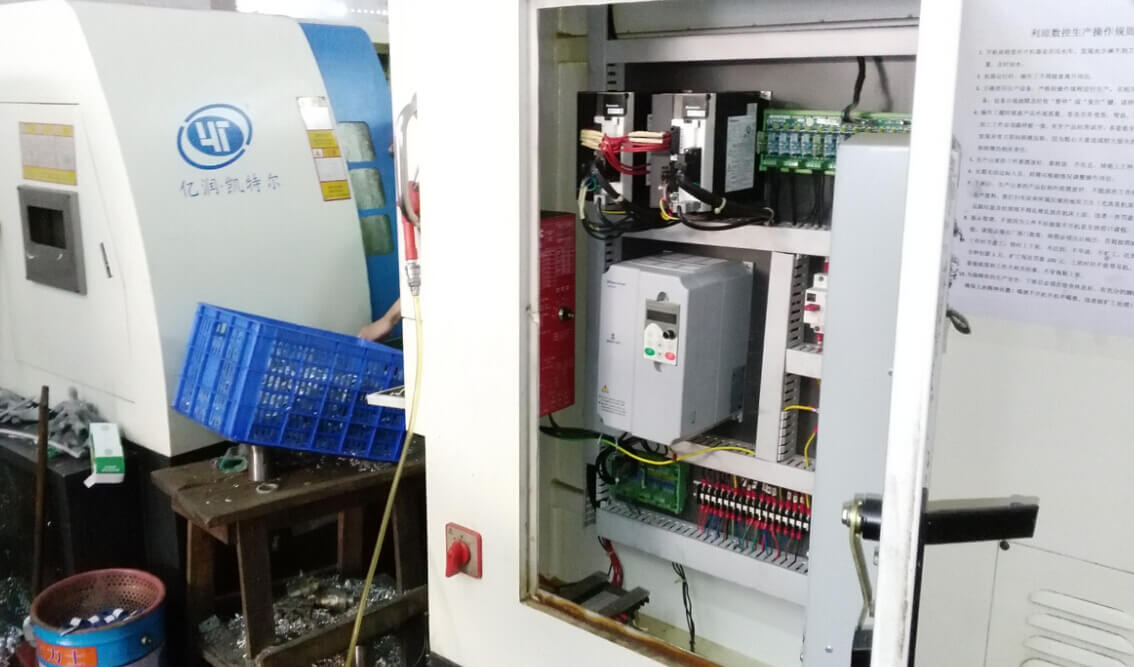The power consumption of CNC machine tools is directly determined by the motor power of the machine tool and the continuous running time of the machine tool, while the continuous running time of CNC machine tools is determined by the operating conditions of the machine tool, namely start stop frequency, acceleration time, processing time, and shutdown time. Therefore, we calculate power consumption based on the power, operating time, and operating condition coefficient of the CNC machine tool.
3、 Product Introduction of IPC-PGC Sine Wave Energy saving Feedback Device
The IPC-PGC sine wave energy-saving feedback device is a low-noise energy-saving product manufactured using Canadian technology, which uses advanced algorithms to achieve complete sine wave energy feedback. It can feed back the regenerated electrical energy generated during the motor speed regulation process to the power grid, avoiding energy loss caused by conventional energy consuming braking units and achieving energy-saving effects. The PGC sine wave energy-saving feedback device product is equipped with reactors and noise filters inside, which can be directly connected to the power grid without causing interference to the power grid and surrounding electrical equipment.
At present, it has been widely used in CNC machine tools, servo control systems and other occasions.
When the spindle of a CNC machine tool or servo control system brakes rapidly, the electric motor will be in a regenerative power generation state. The six diodes in the inverter convert the mechanical energy of the transmission mechanism into electrical energy and feed it back to the intermediate DC circuit, causing an increase in voltage across the energy storage capacitor. In order to achieve the feedback of regenerative electric energy from the braking state of the motor to the grid, the grid side inverter should adopt a reversible inverter. The IPC-PGC energy feedback device launched by Jianeng Company adopts a grid voltage recognition board with PWM control mode. Due to the use of PWM control technology, the magnitude and phase of the AC voltage on the grid side can be controlled, which can make the AC input current in phase with the grid voltage and approach a sine wave. The power factor of the transmission system is greater than 0.96, and it has 100% grid feedback capability during feedback braking without the need for an autotransformer.
The IPC-PGC electric energy feedback device can feed back the regenerated electric energy generated during motor speed regulation and other processes to the power grid, avoiding energy loss caused by resistance heating using conventional energy consuming braking units, thus achieving ideal energy-saving effects and efficient operation.
When the motor is operating in a generating state, the electrical energy generated by the motor flows back to the DC bus through the diode on the inverter side. When the DC bus voltage exceeds a certain value, the IPC-PGC electrical energy feedback device will start, reversing the DC to AC, and feeding back the electrical energy to the grid by controlling the voltage phase and amplitude of the electrical energy feedback device, achieving the goal of energy conservation.
The main technical features of IPC-PGC sine wave energy-saving feedback device are:
Technical Indicators:
Maximum mechanical energy recovery power: 12KW
Mechanical energy conversion efficiency: 70% -95%
Power quality: Pure sine wave, THD<5% @ 100% load
Response time: 10ms (0.01 seconds)
Compatible motors: spindle motor system, servo motor system
Maximum downtime: 0.3 seconds
Normal downtime: 1-4 seconds
Suitable voltage: 360V-460V, 50/60HZ, three-phase
Safety and Electromagnetic Compatibility Standards: EN50178-1997 EN12015-2004 EN12016-2004 EN61000
4 built-in reactors and filters, plug and play
PGC adopts an integrated structural design, with built-in reactors and filters, so users do not need to purchase separately
5 completely replace resistance braking
PGC can completely replace resistance braking, turning energy consuming components into faulty ones and saving over 60% of installation space.
6. Easy to operate, reducing installation and training costs
Before leaving the factory, each PGC product has already been set with technical parameters that meet over 90% of the requirements, making it plug and play. At the same time, to meet complex working conditions, users only need to adjust the action threshold to ensure 100% use. Therefore, even if you are not a technical expert, you can quickly get started operating PGC.
7. Use global grid frequencies without geographical restrictions for applications
PGC product THD meets the filtering standards of the global world; EMC/EMI meets the stringent EN55022 Class A standard; It can operate stably at grid frequencies ranging from 45Hz to 65Hz. Therefore, the application of PGC products is completely unrestricted by geographical limitations












































